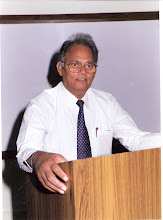On 28th Feb 1953, Francis Crick announced to a community of scientists, “We have found the secret of life.” That morning the two scientists working jointly had unraveled the double helix structure of DNA.
This established beyond doubt that DNA carries life’s hereditary information.
There is a celebration, scheduled on 28th Feb 2003,
Organized by TIME, to commemorate this signal achievement of the century gone by. Mr. Watson the surviving member of the team, and Time’s President will be the hosts at a three-day conference styled “The Future of Life.”
Sounding off, one’s ideas to a group sharing the knowledge and skills as in the case of Mr. CRICK, is a sure way of shaping perfection to it.
Both shared their ideas in a group of great learners in the field, and the benefit to the community was their double helix model of the DNA structure.
AVAILABILITY OF, PROPER TECHNICAL TOOLS.
There are a few things to be noted, about this breakthrough discovery.
If proper knowledge support- tools are made available to the scientists they can generate new knowledge.
This was available to the inventors CRICK & WATSON at Cambridge like, 3D, MOLECULAR Models which was not available to another scientist, Rosalind Franklin, working in the same domain.
They had also a head start when Watson had a look at the X-ray diffraction picture taken by Ms Franklin. Incidentally Maurice Wilkins, who shared the Nobel for the invention with Crick and Watson, showed this to him.
Probably sharing, of knowledge and expertise, in this field, such as above was not possible for Linus Pauling, a Nobel laureate, for Chemistry. He lagged behind from hitting the bull’s eye, although he had also a hint, about the nature of the structure. Crick and Watson won.
FORMATION OF COMMUNITY OF PRACTICE.
What is a community of practice? I believe it can best be summed up in the definition cited below:
“A learning community is a trusting group of professionals united by a common concern or purpose, dedicated to supporting each other in increasing their knowledge, creating new insights and enhancing performance in a particular domain”
Eric Vogt and Diane Hessan.
In our present day knowledge society, every one who is somebody is after seeking knowledge. A potent tool such as encouraging communities of practice by the business houses, and the society at large would be beneficial to all.
Such communities of practice should be, initiated and encouraged, in the corporate world. It leads to, creation of new knowledge and refinement of the known.
It could be a formal group or an informal social, professional, gathering.
One basic ingredient in such sharing has to be an innate MUTUAL TRUST.
ORGANIZATIONAL PRACTICES
People are not accessible easily.
They are scattered and have different skill sets. In spite of the present day advanced technology it cannot help so much the personal interaction. One way to get them together is, to consciously form such communities of practice. They then work for organizational good and achieving team goals.
There are 12000 people in the R & D Department, at
Generally the R&D personnel tend to be secretive and are not wont to share their pursuits with others. They fear that the lead may be lost if it is shared. No longer is this trait ESPOUSED. Especially with growing complexities of specializations, sharing is a prerequisite and not only a fashionable word.
AKIHIRO WADA, heading the R. & D department encouraged and rewarded networking within the group.
His attitude is,” They are committed to their own technologies. But they are also curious about each other’s projects. That commitment and curiosity are a powerful combination. It is what drives our organization.”
Such cross-fertilization of ideas has been a resounding success, at
The result was a “green car”, which they have produced, based on fuel cell technology. A car, which, has water as the only emission. No air polluting gases. It is a fuel-cell electric vehicle.
The community of practitioners could be cross-functional or have similar functions. Sharing in such communities is not title based but on the talent and skills of the individuals.
In the process to contribute, to knowledge, this may transcend the boundaries of time and space. A recent example at the mundane level can be mentioned, relating to the shocking tragedy at
What is true in the above case for community goals is doubly relevant in the area of pursuit of knowledge. . It has the force of a mass movement.
There is a lot of tacit knowledge available with many. In a group of like-minded individuals this incommunicable knowledge finds words for expression. It is available for scrutiny and improvement, by the community of practitioners.
They share common commitments and values. Technology facilitates support systems today such as, data mining software, on- line training. etc.
HOW USEFUL TO COMMUINITY AT LARGE
If civil engineers who service their clients, were to share the technology. On materials, safety standards, new production methods, earthquake proof structures, and muster in the CAD experts for design support etc. the community at large will be benefited.
The key to success in generating new knowledge, and taking it to perfection for the use of the community, is sharing.
For proper application by any organization, of knowledge; “the prime resource”; powers- that- be have to initiate, encourage and develop “communities of practice”.
M. S. RANADE
PUBLISHED IN INDIAN EXPRESS ON THURSDAY, 13TH FEB, 03,
IN APPOINTMENTS COLUMN, PUNE.

No comments:
Post a Comment